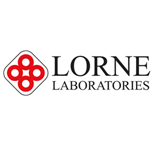How to maintain a hygienic Laboratory reducing the likelihood of Contamination
28 May 2015
Lack of a cleaning regime in a laboratory can cause not only samples to be spoiled but can cause a loss cost-wise. Simple steps in ensuring a clean and hygienic laboratory should be taken if results and a profit are top priority.
We at Lorne Labs have come up with some popular areas where cleanliness is lacking and have listed some steps that can be taken to prevent problems in the laboratory in the long term.
Worktops and Desks
· Keep your worktop/desk clean throughout the day. This eliminates clutter and can help you work more efficiently, meaning you do not need to do a big clean up at the end of the day when you’re tired! Doing this also keeps the risk of contamination of specimens at bay.
Equipment Maintenance
· It is rare that just one person uses laboratory equipment; in reality one piece of equipment is used by at least several people! This means a higher risk of contamination if order and cleanliness is not kept at a high standard. Laboratories can easily build up with excess equipment so it is important to schedule at least a bi-yearly in-depth clean up. Everyone must clean their own worktops or desks as well as the communal areas to ensure a thorough clean.
· Calibrating equipment is an important task that should be carried out regularly! This guarantees good maintenance that increases both safety of the use of the equipment and can prolong the life span of it, minimising the likelihood of having to call out a technician (saving time and cost in the long term!).
· Airing out fridges and freezers is a top priority in a laboratory! Overtime laboratories accumulate thousands of tubes containing old samples that people have forgotten about (or even the label has faded!). Freezers are more susceptible to neglect than fridges with more samples being filled to the brim in them, making it difficult to search and retrieve specific samples. This is why it’s crucial for laboratory workers to dispose of old or irrelevant samples properly whilst ensuring important samples are properly labeled and stored in the correct place.
Samples and Documentation
· If there are samples that are missing documentation, it is crucial to take the time to search for it, as it will save time down the line.
Dust and other remnants
· To prevent contamination it is vital to thoroughly clean all shelves, fridges /freezers, bottles and cabinets. It is also important to clean air conditioning units and their filters, as this is a top cause of dust contamination in samples. If not cleaned properly they can accumulate dust containing viruses, microbes and toxic chemical particles (a leading cause of allergies flaring up).
If poor lab hygiene has resulted in contamination of equipment, samples and supplies, visit Lorne Lab's product range to restock.
< Back to blog list
Share




